Invented by Sankaran Thayumanavan, Conghui Yuan, University of Massachusetts UMass
One of the key advantages of polymer-polymer composite nanoassemblies is their ability to combine the properties of different polymers. For example, one polymer may be strong and rigid, while another may be flexible and elastic. By combining these two polymers at the nanoscale level, a new material can be created that is both strong and flexible. This makes polymer-polymer composite nanoassemblies ideal for a wide range of applications, from automotive and aerospace to biomedical and electronics.
In the automotive industry, polymer-polymer composite nanoassemblies are being used to create lightweight, high-strength materials that can improve fuel efficiency and reduce emissions. These materials are also being used to create new types of tires that are more durable and have better traction. In the aerospace industry, polymer-polymer composite nanoassemblies are being used to create lightweight, high-strength materials for aircraft components, such as wings and fuselages.
In the biomedical field, polymer-polymer composite nanoassemblies are being used to create new types of drug delivery systems. These systems can be designed to release drugs slowly over time, which can improve their effectiveness and reduce side effects. Polymer-polymer composite nanoassemblies are also being used to create new types of medical implants, such as artificial joints and bone scaffolds.
In the electronics industry, polymer-polymer composite nanoassemblies are being used to create new types of electronic devices, such as flexible displays and sensors. These materials are also being used to create new types of batteries that are more efficient and longer-lasting.
The market for polymer-polymer composite nanoassemblies is expected to grow significantly in the coming years. According to a report by MarketsandMarkets, the global market for polymer-polymer composite nanoassemblies is expected to reach $7.7 billion by 2025, growing at a CAGR of 10.7% from 2020 to 2025. The growth of this market is being driven by the increasing demand for lightweight, high-strength materials in various industries, as well as the growing demand for new types of electronic devices and medical implants.
In conclusion, polymer-polymer composite nanoassemblies are a promising new type of material with a wide range of applications. Their ability to combine the properties of different polymers makes them ideal for use in various industries, from automotive and aerospace to biomedical and electronics. As the market for these materials continues to grow, we can expect to see even more innovative applications in the future.
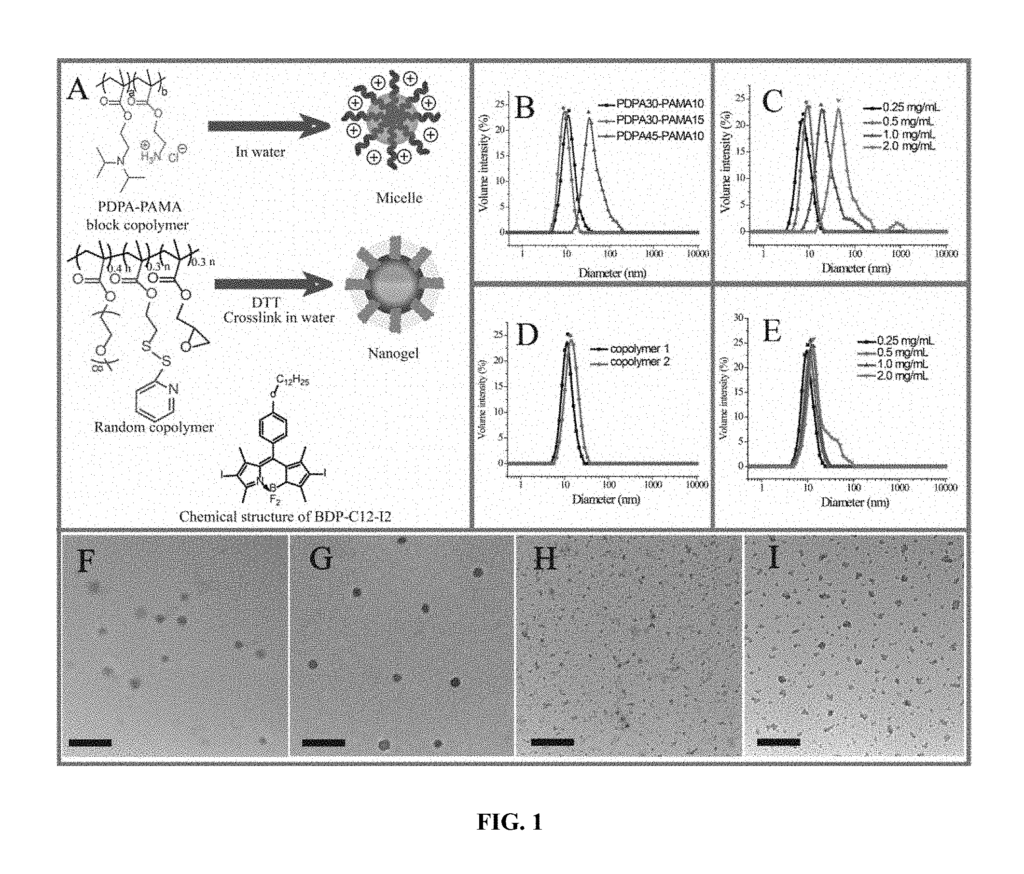
The University of Massachusetts UMass invention works as follows
The invention provides novel nanoscale delivery systems and composite nanoassemblies made from different nanoassembly unit (e.g. block copolymer micelles or nanogels) under stoichiometric controls. These intelligent composite nanoassemblies retain key features of their nanoassembly units, and expand the functional possibilities based on surface functionalization. This invention provides a novel method of building nano-vehicles that can be controlled in morphology using a combination of cooperative release mechanisms (e.g. pH sensitive micelles and redox sensitive nanogels). The composite nanocontainers can hold two types of guests, which can be separated and securely encapsulated. They are then released sequentially by stimulating pH change or reduced glutathione.
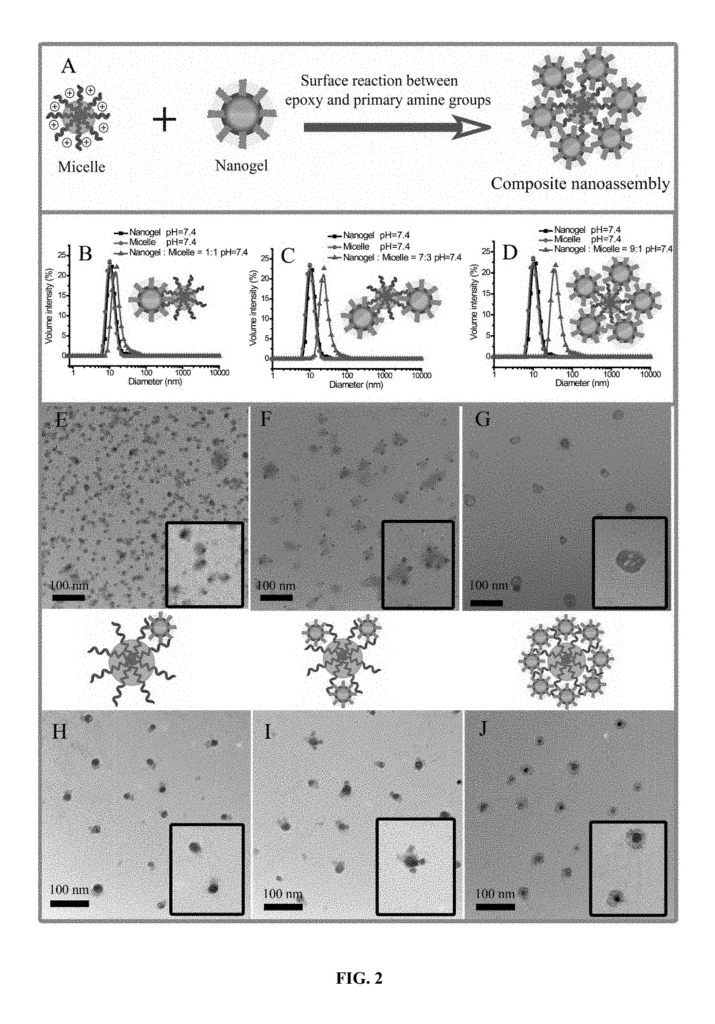
Background for Polymer-polymer composite Nanoassemblies, and their applications
Self-organization has been used in the creation of supramolecular assemblies, such as micelles and vesicles, fibers and helical superstructures, nanoparticles, macroparticles, and tubes. (Zhang, et al. 1995 Science 268, 1728; Zhang, et al. 1996 Science 272, 1777; Hest, et al. 1995 Science 268, 1592; Discher, et al. 2002 Science 297, 967; Hartegrink, et al. 2001 Science 294, 1684; Claussen, et al. 2003 J. Am. Chem. Soc. 125, 12680; Conrnelissen, et al. 1998 Science, 280, 1427; McCarthy, et al. 2005 Nano Lett. 12, 2552; Yan, et al. 2004 Science, 303, 65.) These self-assembled superstructures can be used in many areas, from biology to material science. (Stupp, et al. 1997 Science 277, 1242: Savic, et al. 2003 Science 300, 615.
Developing nanoscale polymeric assemblies that combine multiple nanoassemblies in order to create a hybrid or composite nanostructure remains a daunting task. These difficulties arise primarily from the structural requirements involved in the formation of assemblies. The majority of supramolecular assemblies can be achieved by balancing two incompatible functional group within the same molecule. (Israelachvili, et al. 1976 J. Chem. Soc., Faraday Trans. 2, 72, 1525; Discher, et al. 1999 Science 284, 1143; Tang, et al. 2008 Science 322, 429. This balance can cause a disruption in the fidelity to assembly. Classical example includes the need for hydrophilic-lipophilic balance in amphiphilic molecules to maintain well-defined nanoscale assemblies. (Azagarsamy, et al. 2010 J. Am. Chem. Soc. 132, 4550; Azagarsamy, et al. 2009 J. Am. Chem. Soc. 131, 14184; Amir, et al. 2009 J. Am. Chem. Soc. 131, 13949; Guo, et al. 2012 J. Am. Chem. Soc. 134, 10244.) The fact that composite nanostructures made from two different assemblies would likely disrupt the critical balance required for each individual nanostructure is a major problem.
It is crucial to deliver guest molecules precisely to the target sites using controlled release. This is especially important in biomedical diagnostics and medical therapeutics. (Allen, et al. 2004 Science 303, 1818-1822; Farokhzad, et al. 2009 ACS Nano 3, 16-20; Rozhkova 2011 Adv. Mater. 23, H136-H150.) A number of nanocontainers were studied for their controllable delivery. Nanocontainers can be used to administer guest molecules and enhance therapeutic effects while also possessing low levels of inherent toxicity. (Pan, et al. 2012 J. Am. Chem. Soc. 134, 5722-5725; Shiah, et al. 1999 J. 1999 J. 2005 Bioconjug. Chem. 16, 122-130; Duncan 2003 Nature Rev. Drug. Discov. 2, 347-360; Rothenfluh, et al. 2008 Nature Mater. 7, 248-254.)
Water-soluble polymer nanoparticles such as micelles and nanogels are promising candidates to be used in nanocontainers because of their stability, biocompatibility, and ease of functionalization. (Christian, et al. 2009 Nature Mater. 8, 243-249; Kataoka, et al. 2001 Adv. 2001 Adv. Rev. 47, 113-131; Cabral, et al. 2007 J. Control. Release 121,146-155; Matsumura, and al. 2009 Cancer Sci. 100, 572-579; Plummer, et al. 2011 Br. J. Cancer 104, 593-598; Aliabadi, et al. 2006 Expert Opin. Drug Delivery. 3, 139-162; Nishiyama, et al. 2006 Pharmacol. Therapeut. 112, 630-648; Cabral, et al. 2001 Nature Nanotech. 6, 815-823; Nochi, et al. 2010 Nature Mater. 9, 572-578; Ryu, et al. 2010 J. Am. Chem. Soc. 132, 17227-17235; Oh, et al. 2008 Prog. Polym. Sci. 33, 448-477; Akiyoshi, et al. 1997 Macromolecules 30, 857-861; Kageyama, et al. 2008 Cancer Sci. 99, 601-607; Ryu, et al. 2010 J. Am, Chem. Soc. 132, 8246-8247; Discher, et al. 2002 Science 297, 967-973; Meng, et al. 2009 Biomacromolecules 10, 197-209; Iatrou, et al. 2007 Biomacromolecules 8, 2173-2181; Zhou, et al. 2005 J. Am. Chem. Soc. 127, 10468-10469.)
Nanocontainers have a combination of hydrophobic and waterphilic components. This gives them a high hydrophobic guest encapsulation ability and excellent water solubility. Two sides of one contradiction are encapsulation and release. While stable encapsulation can easily result in a very low release rate, desirable release rates are always a consequence unstable encapsulation. Nanocarriers that have stimulus-response properties were designed to resolve this conflict.
Several strategies have been explored for the triggered-release, including pH, temperature and light sensitivities. (Du, et al. 2005 J. Am. Chem. Soc. 127, 17982-17983; Kakizawa, et al. 2002 Adv. Drug Deliver. Rev. 54, 203-222; Lee. et al. 2007 J. Am. Chem. Soc. 129, 15096-15097; Martien, et al. 2010 Nature Mater. 9, 101-113; Li, et al. 2006 Angew. Chem. Int. Ed. 45, 5792-5795; Qin, et al. 2006 Adv. Mater. 18, 2905-2909; Goodwin, et al. 20051 Am. Chem. Soc. 127, 9952-9953; Kostiainen, et al. 2010 Nature Chem. 2, 394-399; Power-Billard, et al. 2004 Angew. Chem., Int. Ed. 43, 1260-1264; Lin, et al. 2007 Bioconjugate Chem. 18, 138-145; Thorpe, et al. 1987 Cancer Res. 15, 5924-5931; Klaikherd, et al. 2009 J. Am. Chem. Soc. 131, 4830-4838.) Many of these systems respond to environmental signals automatically and make corresponding changes in chemical and physical properties. This can easily lead to inaccurate or uncontrollable delivery.
Researchers have attempted to place guiding devices on nanocontainers in an effort to overcome these limitations. The surface of nanocontainers can be decorated with ligands such as protein, peptide and antibody to aid targeted delivery. To achieve high selectivity, this strategy requires a high degree control over the ligand density. (Rothenfluh, et al. 2008 Nature Mater. 7, 248-254; Ashley, et al. 2011 Nature Mater. 10, 389-397; Strauch, et al. 2011 J. Am. Chem. Soc. 133, 16346-16349; Farokhzad, et al. 2006 Proc. Natl Acad. Sci. USA 103, 6315-6320; Pastan, et al. 2006 Nat. Rev. Rev. Cancer 6, 559-565. A high concentration of targeted ligands is necessary for efficient delivery and affinity in the targeted delivery system for tumor cells. On the other hand, a high ligand density can enhance nonspecific interations with endothelial and other non-cancer cells and increase immunogenicity, leading to opsonization-mediated clearance of nanocontainers. (Peer, et al. 2007 Nature Nanotech. 2, 751-760. Ferrari 2008 Nature Nanotech. 3, 131-132.)
There is a significant unmet need for an intelligent nano-vehicle that can deliver multiple guests accurately and controlled. It is desirable, in particular, to have composite supramolecular Nanostructures that are both hybrids of and independently retain key elements from two or more different nanoassembly parts.
The invention was partly based on the unexpected discovery that novel nano-vehicles were made from nanoassembly units. These include block copolymer micelles, polymeric nanogels, and other components. These nano-vehicles as well as composite nanoassemblies retain key features of their component nanoassembly unit. These nano-vehicles or composite nanoassemblies can be made from multiple types of nanoparticles. This greatly expands the functionalities that are possible based on the surface functional group of each component nanoparticle. It is possible to engineer them to work together.
This novel approach provides a paradigm shift in nano-vehicles design and construction. It is based on combining orthogonal release mechanisms (e.g. redox sensitive microgels and pH sensitive micelles) and allows for controllable morphology. You can have two or more types of guests (e.g. therapeutic agents) separately and stably encapsulated within the nano-vehicles. Then, they can be released simultaneously or sequentially in controlled fashion (e.g. triggered by a pH variation and reduced glutathione). The invention’s intelligent nanocontainers can be made from any combination of polymeric nanostructures that have stoichiometric control, such as polymeric microelles and polymeric nanogels. Combining these unique functionalities allows them to adapt to many applications. For example, they can be used to deliver different drug molecules at specific locations with independent cargo release.
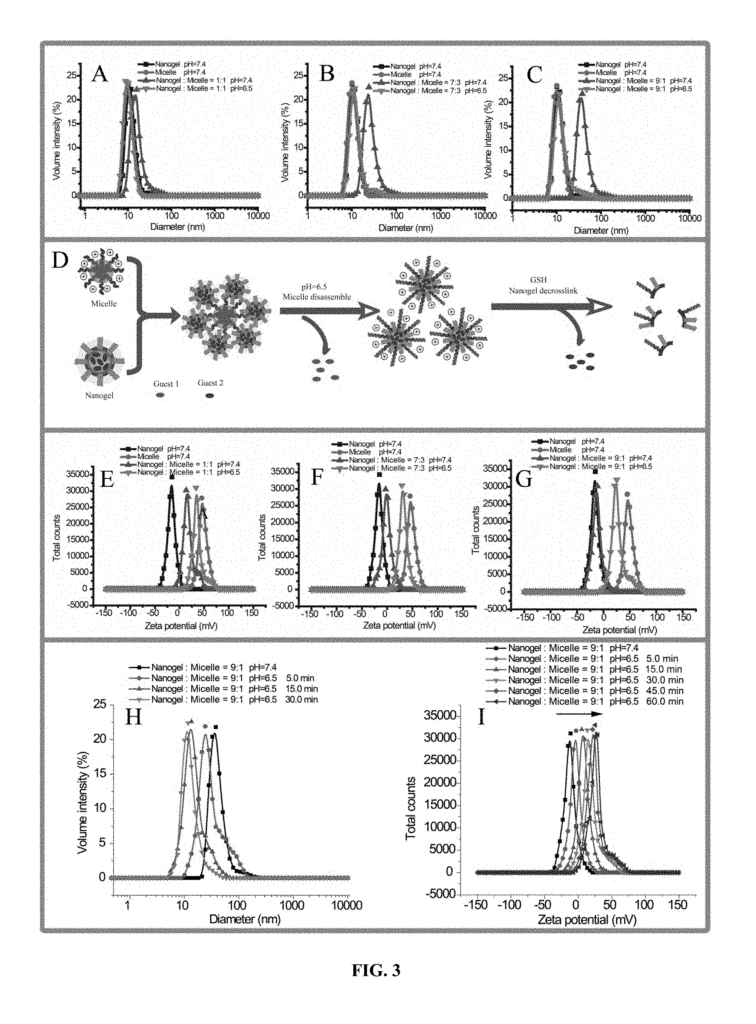
The invention is generally directed to a nano-vehicle carrying two molecules. The nano-vehicle comprises: (1) a nanoassembly containing a first molecular cargo encapsulated in stably and which can be individually addressed by a biological or chemical intervention, resulting in structural changes therein and the release of the first molecular vehicle from the first nanoassembly. (2) a nanoassembly containing a second molecular cargo encapsulated in stably and which can be individually addressed by a third nanoasssssssembly and releasing the second molecular van der here To form the nano-vehicle, the first and second nanoassemblies are covalently or non-covalently linked in a controlled stoichiometric ratio. Both the first and second nanoassemblies are structurally distinct at the nanoscale.
In some preferred embodiments, the first nanoassembly may be a polymeric nanogel while the second nanoassembly may be a polymeric micelle. The polymeric nanogel may be made from a random copolymer by controlled crosslinking, while the polymeric micelle can be made from a block copolymer at controlled pH.
In another aspect of the invention, the invention generally refers to a composite nanoassembly that contains two, three, or more types unit nanoassemblies. Each type of unit nanoassembly is structurally distinct at the nanoscale. Each can be addressed individually by chemical or biological intervention, resulting in structural changes. Controlled intervention is possible because the biological or chemical intervention for one unit nanoassembly type is orthogonal to those for all other types. The stability of other unit nanoassemblies is not affected by a biological intervention or chemical intervention.
In another aspect, the invention generally refers to a method of controlled delivery two or more distinct agents to a target biologic site. (1) Creating a composite nanoassembly that includes two or more types unit nanoassemblies. Each type of unit nanoassembly is structurally distinct and can be addressed individually by a chemical or biological intervention that results in a structural shift. Each unit nanoassembly is composed of a distinct agent that has been encapsulated securely.
In some preferred embodiments, the target biological location is within a tumor cell. A composite nanoassembly can be made to be more readily taken up by tumor cells than non-tumor cells under certain physiological conditions. Preferably, the first and second guests molecules are selected from a biologically active diagnostic, imaging, or therapeutic agent.
The invention combines two or more distinct nanostructures to create intelligent composite nanoassemblies. This invention can be used to deliver two or more guest molecules (e.g. therapeutic agents) at a target site (e.g. inside a tumor cell) and control their simultaneous or sequential release. Two nanoassemblies may be covalently attached, with one nanostructure component, e.g. the micelles, being pH sensitive, and the other nanostructure component, e.g. the nanogels, being redox sensitive. You can fine-tune the properties of the combined composition by changing the ratio of micelles to nanogels, altering the molecular structure of the polymers used in the construction of nanogels and micelles, or triggering release mechanisms.
The delivery of drugs to tumor cells remains a major problem. It is possible to deliver two or more types of guest molecules at once, as many diseases, including cancer, can be treated with a combination of drugs. (Tilakaratne, et al. 2007 Biomaterials 28, 89-98; Patil, et al. 2007 J. 2007 J. Different guests can be released at different times under the same stimulus for a simple sequential delivery system. A more complicated system delivers each guest under a specific stimulus at a particular time. (Sung, et al. 2009 Biomaterials 30, 622-631; Zhao, et al. 2009 J. Am. Chem. Soc. 131, 8398-8400; Troutman, et al. 2009 Adv. Mater. 21, 2334-2338.) Designing sequential delivery containers presents a challenge. It is important to simultaneously encapsulate guests and then release them in an orderly manner.
To illustrate the invention with examples, the micelles’ surface can be functionalized (e.g. with amino groups) and the nanogels’ surface (e.g. with epoxy groups). The chemical reaction between epoxy and amino groups is the driving force behind the combination of micelles and nanogels. The disassembly and release of nanogel occurs when the micelles are exposed to weak acids (e.g. pH around 6.5). The nanogel can also be transformed from neutral (or slightly negatively charged) to positively charged by attaching to the block copolymer. The cells at the target sites can absorb the positive-charged nanogel easily. The positive charges can therefore be intentionally shielded or exposed at the right time.
Thus, in response to a stimuli (e.g., pH level), a positively charged amino can be placed within the block copolymer’s interior. The nanogels can be activated by this positive charge revelation. This method also allows for the discovery of a ligand capable of recognizing the receptors that are over-expressed on a cell’s surface. The lipophilic block contains the ligand. The stimulus transforms the hydrophobic block into a hydrophilic one, and the ligand is exposed on the nanogel’s surface. This allows for recognition-mediated uptake.
The nanocarriers (e.g. the micelles or nanogels) of the invention are sensitive to different stimuli. This makes it possible to release two guest molecules simultaneously or sequentially. The nano-vehicles make excellent carriers for administration or co-administration of multiple therapeutic or diagnostic molecules.
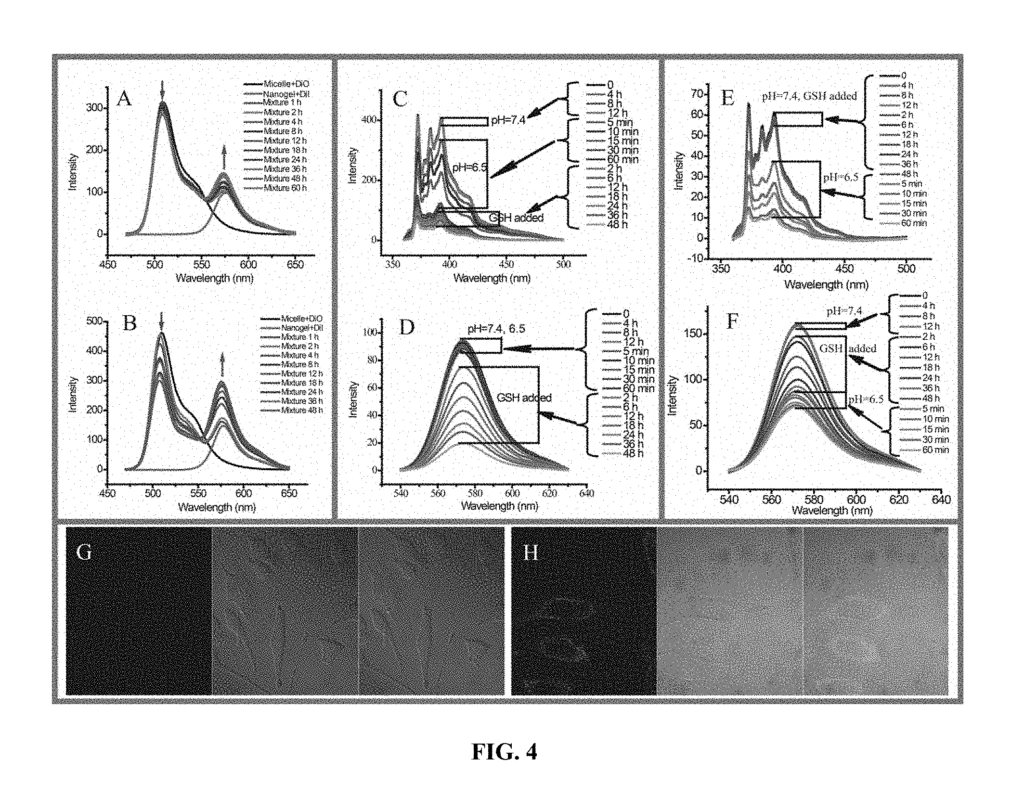
The invention offers a number advantages. First, the invention’s composite nanoassemblies can simultaneously deliver multiple types of guest molecules (e.g. antitumor agents). You can have guest molecules released in controlled releases by triggering controlled events or separately. Both the micelles and nanogels are sensitive to different stimuli. This provides excellent complementarity. Second, dissociation can occur simultaneously with the surface charge reverse of nanogels. The third is the ability to adjust the amount of nanogels on micelles or the ratio of micelles on nanogels during composite generation.
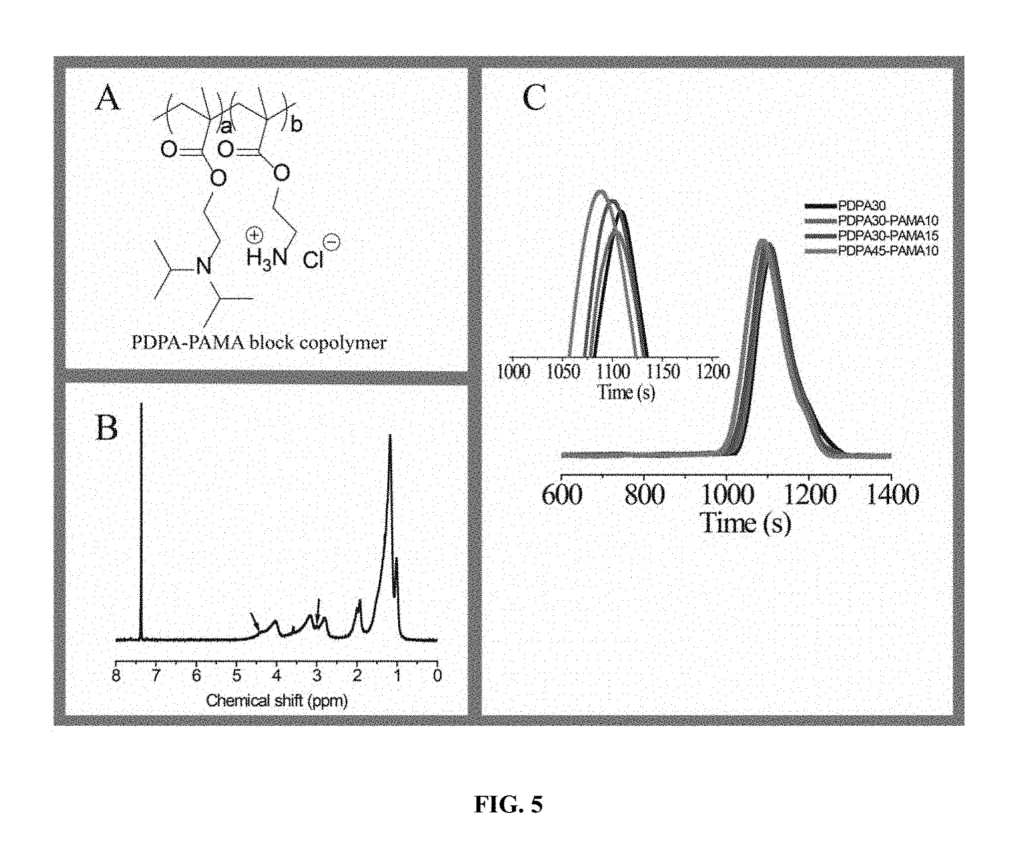
Click here to view the patent on Google Patents.
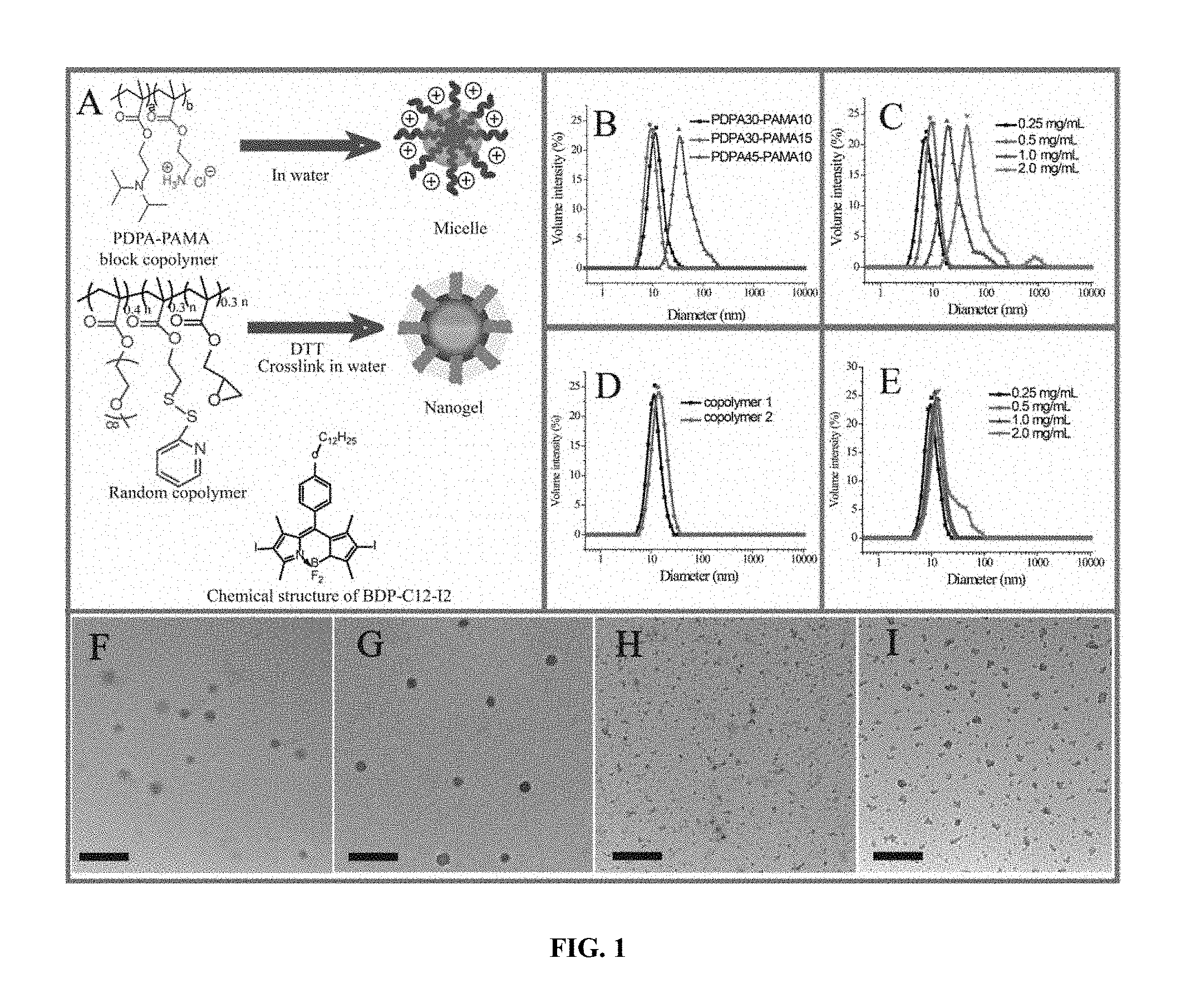
Leave a Reply